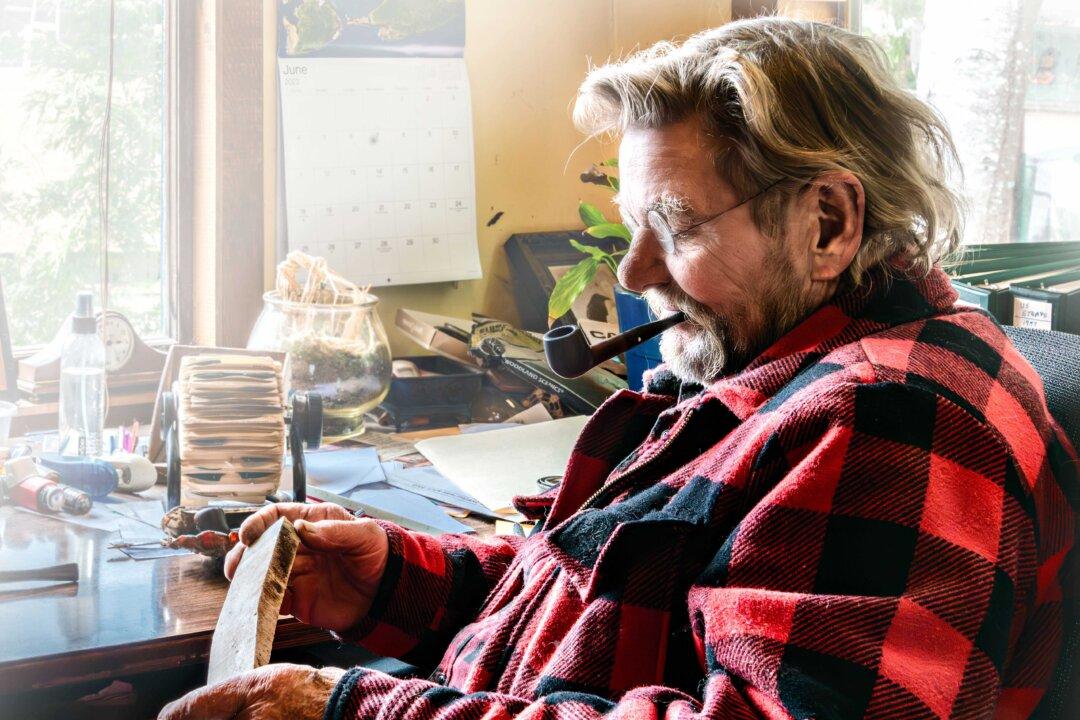On a chilly morning on the edge of the redwoods at the back of Humboldt Bay, Eric Hollenbeck sat on a worn wooden bench with a cup of coffee in his hands and an adopted calico cat curled up at his feet. A scavenged potbelly stove radiated warmth into the rustic reception room. In his lumberjack red plaid flannel shirt, the woodworking wizard drew solace from puffing his billiard pipe, billowing tobacco smoke.
In sizing up Mr. Hollenbeck, the descriptors that stick like wood glue are grit and mettle. In 1973, he started a salvage logging company in the northern California coastal town of Eureka with a $300 bank loan and a leap of faith. A half-century later, the eighth-grade dropout is the successful proprietor of Blue Ox Millworks, one of the last Victorian mills in America employing traditional tools and techniques.





